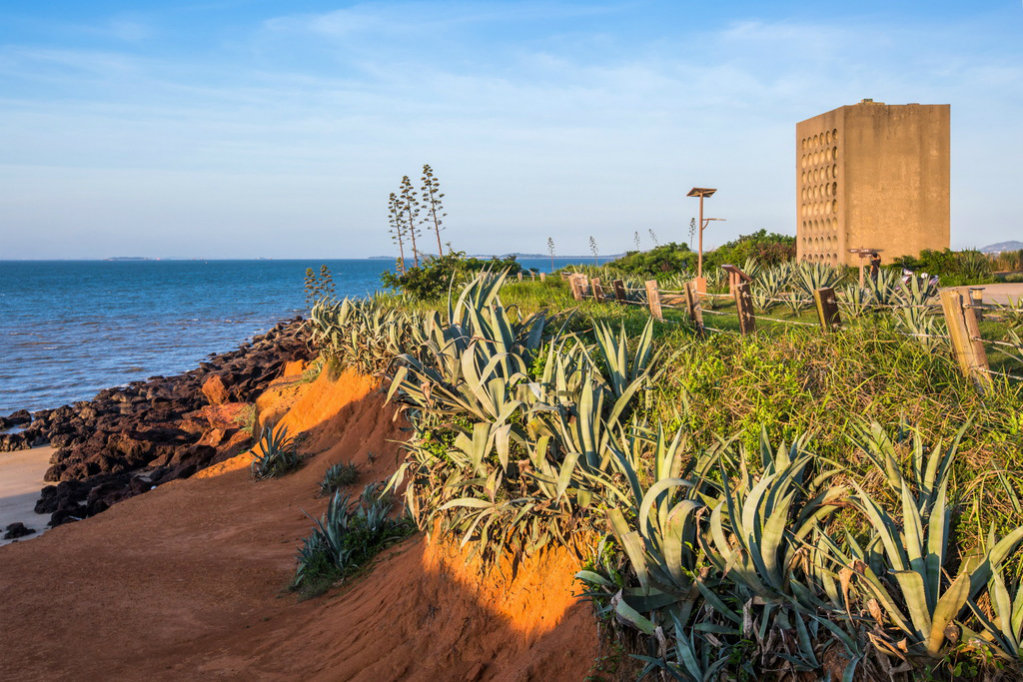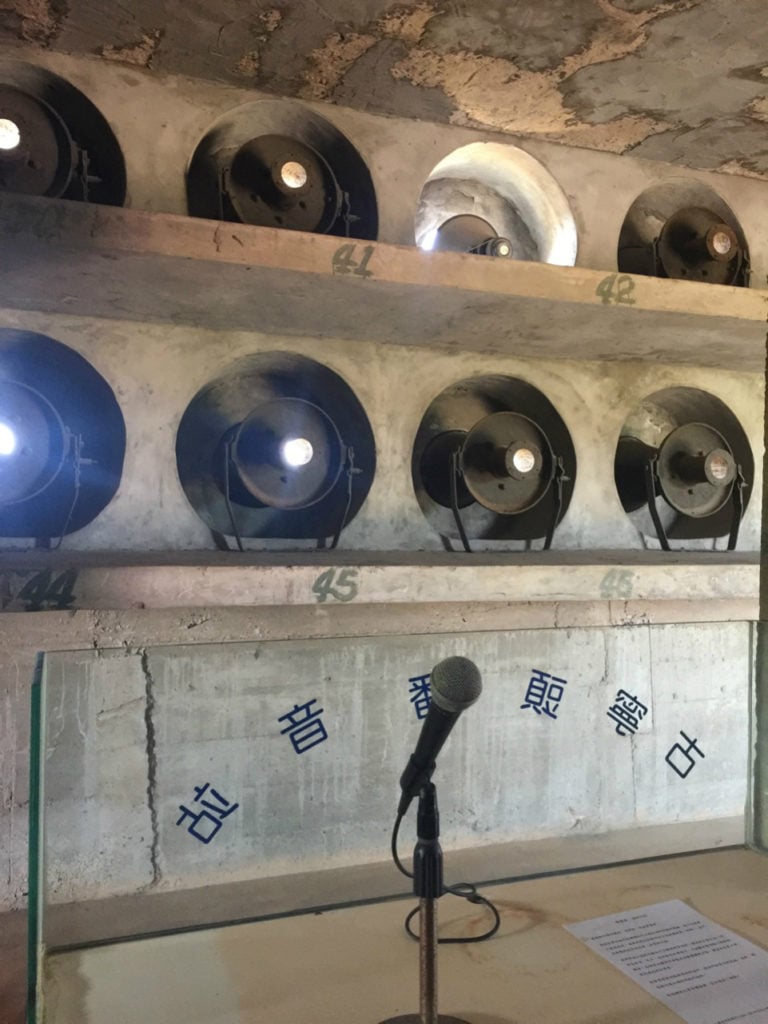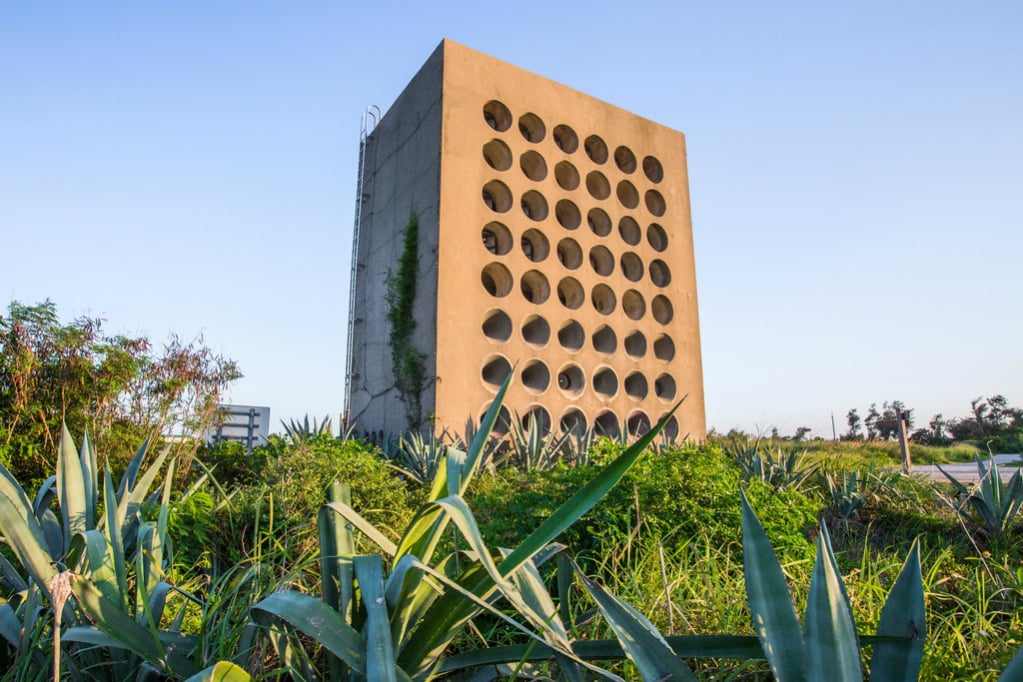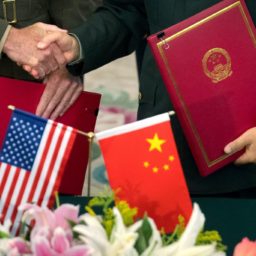Taiwan’s Kinmen Island and China are separated by less than four miles of sea. In the 1960s, rather than let such close proximity go to waste, the Taiwanese erected monumental towers of loudspeakers on the island to broadcast anti-Communist propaganda across to the mainland. Now, 60 years later, a group of artists will reactivate one of the surviving military-grade sound systems for a politically charged performance on August 26.
Called “Sonic Territories,” the site-specific performance will feature work by four Taiwanese artists and the French-born, Berlin-based artist Augustin Maurs, who came up with the concept. Maurs admits that he did not know much about Taiwan before he was invited to visit the islands by the artist and curator Ada Kai-Ting Yang, who is participating in the project.
“I came across this amazing site, and I asked if she thought it was possible to do something there,” Maurs tells artnet News. The “broadcast walls” are 10 meters (30 feet) tall and house 48 loudspeakers, he explains. They were designed to have an estimated range of 25 kilometers (15 miles) when turned up to full volume, and in the right wind conditions, the sound could travel across the Taiwan Strait to the Chinese city of Xiamen.

China is less than four miles away from Taiwan’s Kinmen Island. Photo courtesy of the Department of Tourism, Kinmen County Government.
“Sonic Territories” is timed to take place on the 60th anniversary of the Second Taiwan Strait Crisis, when the People’s Republic of China shelled the island to test America’s resolve to support Taiwan during the Cold War. Six decades later, China still regards Taiwan as a wayward province; it has been trying for years to pressure the US and other countries not to recognize the islands’ independence.
Maurs, Ada Kai-Ting Yang, and the three other participating artists will be on Kinmen Island for a week-long workshop ahead of the August performance. And they will be there at a time when tensions between China, Taiwan, and the US are rising. (President Trump signed a pro-Taiwan defense bill this week, which China was quick to condemn.) “It is tricky for the Taiwanese,” Maurs says. “I tried to speak about those things, but it’s very difficult. There are a lot of opinions, and it is very subtle.”
“Art doesn’t have to be explicitly political to be political,” the artist explains. His work in the show will explore the limits of language. It will also feature the Kinmen Country Choir, members of which lived through the years of martial law and can remember the loudspeakers when they were in use.
The original broadcasts, which ended in the 1970s, were not subtle. “From what I understand, it was really loud—for some disturbingly loud,” Maurs says. “They are not necessarily good memories for the people of the island,” he adds. Maurs says its important for the project to address both the historical trauma the crisis caused and the commemoration. He stresses that the loudspeakers will not be turned up to their full volume.

Inside the Kinmen broadcast wall the technology is basic. Photo by Ada Kai-Ting Yang.
Local artist Wang Fujui will also participate in the project. “He is the sound art pioneer of Taiwan,” Maurs says. Known for developing his own high-tech loudspeakers, Wang will be using the very low-tech broadcast wall on Kinmen. “They are very solid. They are more meant for announcements. They are not meant for music,” Maurs explains. That said, many of the original voices of the loudspeaker were female singers, including the Taiwanese artist Teresa Teng (1953–95), whose songs, punctuated by spoken messages, were used to persuade listeners in Communist China.
Maurs, who is taking part in the Busan Biennial in South Korea, will also bring the project and the participating artists to another Cold War hotspot: Berlin. “Sonic Territories” will be presented in the German capital on Saturday, September 15, at Kunstquartier, Bethanien.
“Sonic Territories,” Beishan Broadcasting Station, Guningtou Battle Museum, Kinmen Island, Taiwan, August 26.









